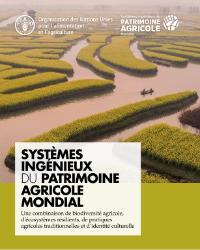Focal point
Location
The Food and Agriculture Organization of the United Nations leads international efforts to defeat hunger. Serving both developed and developing countries, FAO acts as a neutral forum where all nations meet as equals to negotiate agreements and debate policy. FAO is also a source of knowledge and information. We help developing countries and countries in transition modernize and improve agriculture, forestry and fisheries practices and ensure good nutrition for all. Since our founding in 1945, we have focused special attention on developing rural areas, home to 70 percent of the world's poor and hungry people.
Members:
Resources
Displaying 296 - 300 of 5074Приготовление и применение компоста. Биогумус и метод “Шербет Суу”
Настоящие издания, разработаны на основании материалов теоретических и лучших практик демонстрационных участков, созданных в рамках проекта Сельскохозяйственной и Продовольственной Организации Объединенных Наций и Глобального Экологического Фонда «Устойчивое управление горными лесными и земельными ресурсами в условиях изменения климата».
Capitalization on the EU Land Governance Programme - Agenda
Expected outcomes of Capitalization meetings include:
•implementation of country-level projects reviewed•technical and soft skills of project staff relevant to improving governance of tenure increased•experiences in project implementation shared and lessons learned•good practices experienced by projects collected and included in communication products•input into high-level processes providedWater and agriculture in the agenda 2030 for the Near East and North Africa Region
The NENA region already exposed to chronic shortage of water will face in the coming decades a severe intensification of water scarcity due to several drivers, including demographic growth and its related food demands, urbanization, energy demand and overall socio-economic development. Furthermore, NENA is experiencing more frequent, intense extreme events (in particular droughts) as a consequence of climate change.
Systèmes ingénieux du patrimoine agricole mondial (SIPAM). Une combinaison de biodiversité agricole, d'écosystèmes résilients, de pratiques agricoles traditionnelles et d’identité culturelle
Pendant des siècles, les agriculteurs, éleveurs, pêcheurs et sylviculteurs ont développé des systèmes agricoles diversifiés, adaptés à leurs conditions locales, en employant des techniques et des pratiques ingénieuses, éprouvées au fil du temps, afin de fournir un ensemble vital de services sociaux, culturels, écologiques et économiques à l'humanité. Ces «Systèmes ingénieux du patrimoine agricole mondial» (SIPAM) sont des paysages d'une beauté remarquable associant la biodiversité agricole à des écosystèmes résilients et à un précieux patrimoine culturel.
Informe del 24o período de sesiones del Comité Forestal
Report of the 24th Session of the Committee on Forestry











